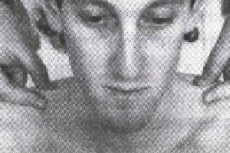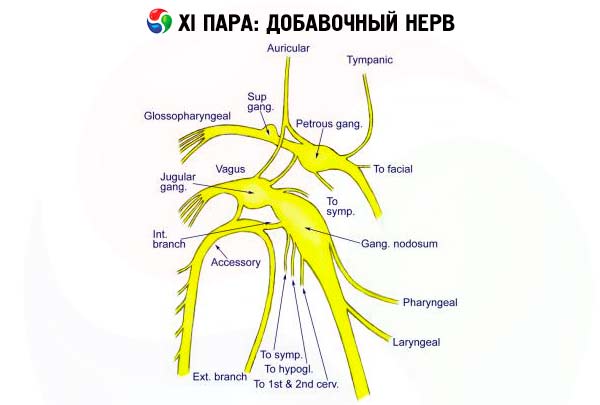Medical expert of the article
New publications
Examination of cranial nerves. Pair XI: accessory nerve (n. accessorius)
Last reviewed: 07.07.2025

All iLive content is medically reviewed or fact checked to ensure as much factual accuracy as possible.
We have strict sourcing guidelines and only link to reputable media sites, academic research institutions and, whenever possible, medically peer reviewed studies. Note that the numbers in parentheses ([1], [2], etc.) are clickable links to these studies.
If you feel that any of our content is inaccurate, out-of-date, or otherwise questionable, please select it and press Ctrl + Enter.

XI pair: accessory nerve (n. accessorius) - a purely motor nerve that innervates the sternocleidomastoid and trapezius muscles.
The examination of the accessory nerve function begins with an assessment of the outline, size and symmetry of the sternocleidomastoid and trapezius muscles. It is usually sufficient to compare the right and left sides. If the nucleus or trunk of the XI nerve is affected, the shoulder girdle on the side of the paralysis is lowered, the scapula is slightly displaced downwards and laterally.

To assess the strength of the sternocleidomastoid muscle, the patient is asked to forcibly turn his head to the side and slightly upward. The doctor counteracts this movement by applying pressure to the patient's lower jaw. With a unilateral contraction, the sternocleidomastoid muscle tilts the head and neck to its side and additionally turns the head to the opposite side. Therefore, when testing the right muscle, place your hand on the left half of the patient's lower jaw, and vice versa. Look at the contours and palpate the belly of this muscle during its contraction. To assess the strength of the trapezius muscle, ask the patient to "shrug" ("raise your shoulders to your ears"). The doctor resists this movement.


 [
[